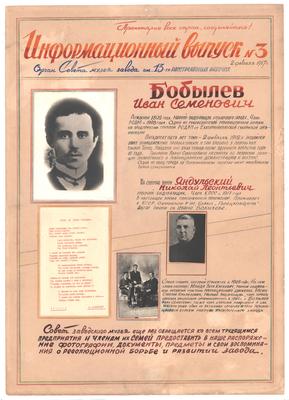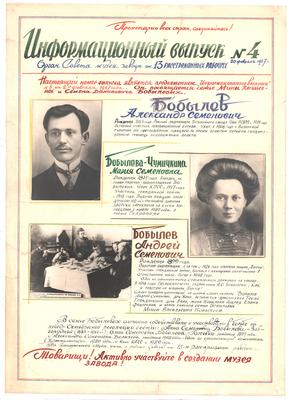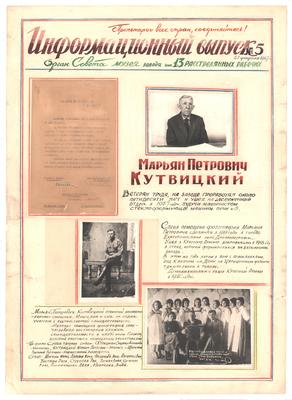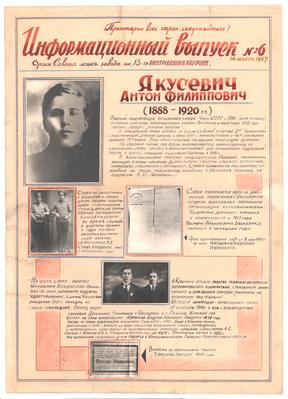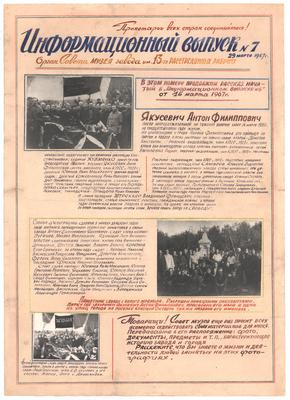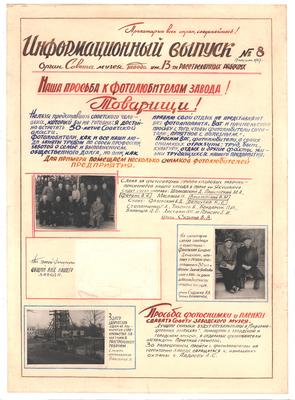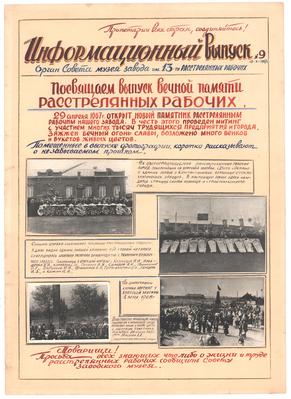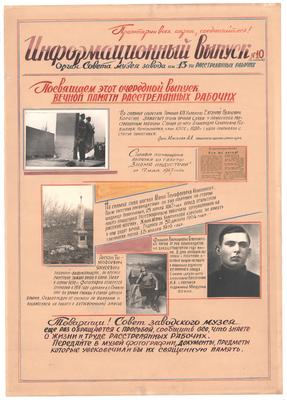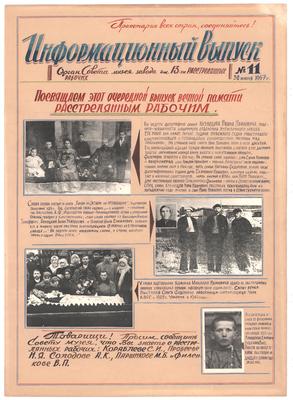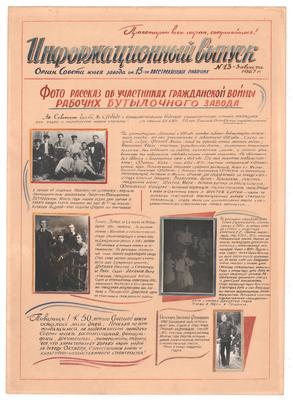Ihor Bredikhin
As part of the "Un/Archiving Post/Industry" project, local historian Ihor Bredikhin provided these materials for digitization, which he saved from destruction after the plant's closure.
The wall newspaper started to be produced in 1967 in Kostiantynivka, Donetsk Oblast, at that time named after the "13 executed workers." Thirteen newspaper issues, made on vertical paper sheets, reveal the plant's history, explain its name, and call for the publication of photographs and memories related to the confrontation with the White Guards. They did not have a specific title, and the headline read "Newsletter" ("Informatsyonnyi vypusk," rus), and the number and date of issue. Above them was the slogan – "Workers of all countries, unite!" ("Proletarii vsiekh stran, soiediniaities," rus). Under the heading was the publisher – "the Council Authority of the Museum of the plant named after the 13 executed workers" ("Orhan Sovieta muzeia zavoda im. 13-ti rasstreliannykh rabochikh," rus).
Each issue focused on people who participated in the struggle against the White Army. To honor one of the stories of this struggle, the bottle plant in Kostiantynivka was named the 13 Executed Workers Plant. In 1918-1920, Kostiantynivka underwent numerous power changes, seized first by the White Guards and then by the Red Army. According to one of the legends, the White Guards forced the workers of the local bottle plant to decide: either they would hand over the Bolsheviks who were among them, or every tenth worker would be shot. The workers disobeyed the order to hand over their comrades — thirteen of them died. According to local historians, this legend results from later communist propaganda. Documents provide different information; however, one version says that in December 1918, a small group of communists in the city killed Colonel Zelenskyi, the head of the State Guard of the UPR military. The "krasnovtsi" (supporters of the Almighty Don Host led by Petro Krasnov), at that time, allies of the UPR troops, responded to this provocation by carrying out a punitive action at the bottle factory. It ultimately led to the discrediting of the White Cossack movement.
The wall newspapers spread the "Bolshevik" version of events in regular issues in 1967. For example, they provided facts from the biographies of the workers involved; hence, issue #9 reports on the burial of 13 executed workers — it has photos of coffins before burial in a mass grave, and photos of a rally and a wreath-laying ceremony. The issue was timed to coincide with the unveiling of a new monument to the 13 executed workers.
These materials demonstrate how amateur journalists used photos, texts, and graphic design to tell a story for the small community of the plant.
The issue continues with the story of Anton Yakusevych, including his funeral, commemoration, and comrades.
The story ends with a call to provide materials for creating a plant museum.
